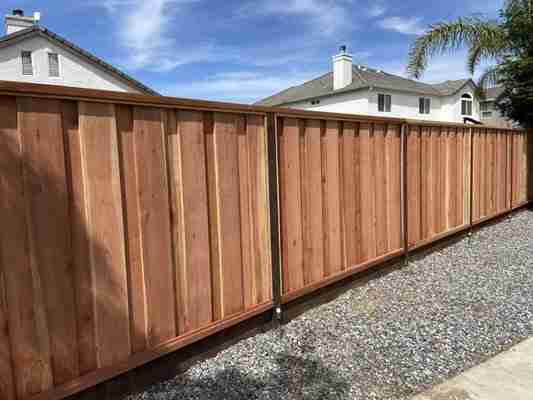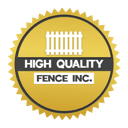Unlocking The Secret Of Effective Fence Gates
In the realm of property security and aesthetics, fence gates play a pivotal role, serving as both a functional entry point and a statement of style. Yet, the effectiveness of these gates often hinges on more than just their physical presence; it lies in the meticulous selection, installation, and maintenance that goes into them. Welcome to our exploration of “Unlocking the Secret of Effective Fence Gates,” where we delve into the essential elements that make a fence gate not just a barrier, but a seamless extension of your property’s allure and protection.
Imagine a gate that swings open effortlessly, welcoming guests with grace, while keeping intruders at bay with steadfast security measures. Envision a gate that not only complements your fence’s design but enhances it, adding a touch of elegance or rugged charm, depending on your preference. These visions are not mere fantasies but attainable realities with the right understanding and application of gate selection, installation techniques, and ongoing maintenance practices.
Throughout this journey, we will uncover the nuances of choosing the right gate for your needs, from material considerations to size and style matching. We will illuminate the path to proper installation, sharing insights on gate post placement, alignment, and hardware selection. Additionally, we will shed light on the importance of regular maintenance and care, ensuring that your gate stands the test of time and continues to be a beacon of security and beauty for your property.
Join us as we unlock the secrets that lie beyond the gate, revealing the art and science behind effective fence gates.
Importance Of Fence Gates
Fence gates play a crucial role in property security, privacy, and aesthetics, making them an essential component of any fencing system. These gates serve as a point of entry and exit, allowing controlled access to the property. Here are some key reasons why fence gates are important:
- Security: One of the primary functions of a fence gate is to enhance security. By providing a barrier that restricts access to the property, a gate helps deter trespassers and unwanted visitors. It also provides a sense of security for homeowners, especially when combined with other security measures like locks and surveillance systems.
- Privacy: Fence gates help maintain privacy by preventing unauthorized access to the property. They can be used to enclose outdoor spaces such as yards, gardens, or patios, creating a private and secluded area for relaxation or entertainment.

- Safety: Fence gates can also enhance safety, especially for families with children or pets. They help keep children and pets within the boundaries of the property, reducing the risk of accidents or wandering off.
- Property Enhancement: Well-designed fence gates can enhance the overall appearance of a property. They add curb appeal and can increase the value of the property by improving its aesthetic appeal.
- Controlled Access: Fence gates allow for controlled access to the property, allowing homeowners to monitor who enters and exits. This is particularly important for properties with multiple entry points or shared access.
In summary, fence gates are an important element of any fencing system, providing security, privacy, safety, and enhancing the overall appearance and value of the property.
Common Issues With Fence Gates
- Sagging: Over time, gates can sag due to the weight of the gate or improper installation. This can affect the gate’s alignment and ease of opening and closing.
- Difficulty in Opening/Closing: Gates that are misaligned or have issues with hinges can be difficult to open or close smoothly.
- Damage to Hinges: Hinges can wear out or become damaged, leading to problems with the gate’s movement.
- Latch Issues: Latches can become misaligned or worn, leading to difficulty in latching the gate securely.
- Rust and Corrosion: Metal gates and hardware can rust and corrode over time, especially in humid or wet environments.
- Wood Rot: Wooden gates can rot, especially if not properly sealed or maintained, leading to structural issues.
- Pest Damage: Insects and rodents can damage wooden gates, leading to structural issues and aesthetic concerns.
- Weather Damage: Exposure to sun, rain, and other elements can cause wear and tear on gates, leading to deterioration over time.
- Impact Damage: Accidental impact from vehicles, lawn equipment, or other objects can cause damage to gates, affecting their functionality and appearance.
- Improper Installation: Gates that are not installed correctly, including issues with post placement and gate alignment, can lead to various problems over time.
Understanding these common issues can help you take proactive steps to prevent them and ensure your fence gate remains in good condition.
Choosing The Right Fence Gate
- Material: Fence gates are available in various materials, including wood, metal, vinyl, and composite. Each material offers unique benefits in terms of durability, maintenance requirements, and aesthetics. For example, wood gates provide a classic look but may require more maintenance than metal or vinyl gates.
- Size: The size of your gate should be determined by the width of the opening it will cover. Measure the opening carefully to ensure the gate fits properly. Additionally, consider the height of the gate in relation to the fence and any local regulations regarding fence height.
- Style: The style of your fence gate should complement the overall design of your property. Choose a gate style that enhances the curb appeal of your home while providing the desired level of security and privacy.
- Functionality: Consider how you will use the gate on a daily basis. Will it be used for pedestrian access only, or will it also need to accommodate vehicles? Choose a gate design that meets your specific needs in terms of functionality and ease of use.
- Budget: Fence gates come in a wide range of prices, so it’s important to set a budget before you start shopping. Consider not only the initial cost of the gate but also any long-term maintenance costs associated with the material you choose.
- Local Regulations: Check with your local building codes and homeowners’ association regulations to ensure your chosen gate complies with any applicable rules regarding fence height, materials, and design.
By considering these factors, you can select a fence gate that not only meets your practical needs but also enhances the overall look and feel of your property.
Installation Best Practices
- Proper Gate Post Installation
- Use sturdy materials such as metal or pressure-treated wood for gate posts.
- Dig post holes deep enough (typically about one-third of the total post length) and wide enough for stability.
- Use concrete to set the posts securely in the ground, ensuring they are plumb and level before the concrete sets.
- Aligning the Gate
- Install the gate so that it swings freely without obstruction.
- Use spacers or shims to ensure even spacing between the gate and the fence posts.
- Check the alignment of the gate regularly, especially after weather changes or heavy use.
- Ensuring Smooth Operation
- Use quality hinges that can support the weight of the gate.
- Install hinges at the correct height and distance from the edge of the gate for smooth swinging.
- Lubricate hinges and moving parts regularly to prevent friction and wear.
- Choosing the Right Hardware
- Select hinges, latches, and other hardware that are appropriate for the size and weight of the gate.
- Consider using self-closing hinges or gate closers for added convenience and security.
- Use sturdy latches or locks to secure the gate in place.
- Testing the Gate
- Test the gate after installation to ensure it opens and closes smoothly.
- Check for any obstructions or alignment issues that may impede the gate’s operation.
- Make any necessary adjustments to ensure the gate operates correctly.
- Maintaining the Gate
- Regularly inspect the gate for signs of wear, rust, or damage.
- Keep hinges and moving parts lubricated to prevent rust and ensure smooth operation.
- Repair or replace any damaged components promptly to prevent further issues.
Following these installation best practices can help ensure that your fence gate operates smoothly and securely for years to come.
Maintenance And Care
- Regular Inspection:
- Inspect the gate regularly for any signs of wear and tear, such as loose hinges, rust, or damage.
- Check the alignment of the gate to ensure it opens and closes smoothly.
- Lubrication:
- Lubricate the hinges and moving parts of the gate with a high-quality lubricant to prevent friction and ensure smooth operation.
- Apply lubricant at least once a year or more frequently if the gate is exposed to harsh weather conditions.
- Painting or Refinishing:
- If your gate is made of wood or metal, consider repainting or refinishing it every few years to protect it from the elements.
- Make sure to use a paint or finish that is suitable for outdoor use and provides protection against rust and corrosion.
- Rust Prevention:
- If your gate is made of metal, inspect it regularly for rust.
- Remove any rust spots using a wire brush and apply a rust-inhibiting primer and paint to prevent further corrosion.
- Damage Repair:
- Repair any damage to the gate promptly to prevent it from worsening.
- Replace any broken or damaged components, such as hinges or latches, with high-quality replacements.
- Seasonal Maintenance:
- Before the start of each season, inspect the gate for any damage or wear that may have occurred during the previous season.
- Make any necessary repairs or adjustments to ensure that the gate operates smoothly.
- Cleaning:
- Regularly clean the gate with a mild detergent and water to remove dirt, debris, and grime.
- Rinse the gate thoroughly with clean water and allow it to dry completely before applying any lubricant or finish.
By following these maintenance tips, you can ensure that your fence gate remains in top condition and continues to enhance the security and aesthetics of your property.
In conclusion, effective fence gates are more than just entry points; they are crucial elements of your property’s security, privacy, and aesthetics. By understanding the key factors that contribute to their functionality and appeal, such as material choice, design considerations, and maintenance, you can ensure that your fence gates not only serve their practical purposes but also enhance the overall look and feel of your property.
If you’re considering installing or upgrading your fence gates, take the time to explore your options and make informed decisions. Choose a design and material that complement your existing fencing and landscaping, and don’t forget to factor in practical considerations such as durability and ease of maintenance. For expert advice and quality installations, reach out to our team today. Let us help you unlock the secret of effective fence gates for your property.


